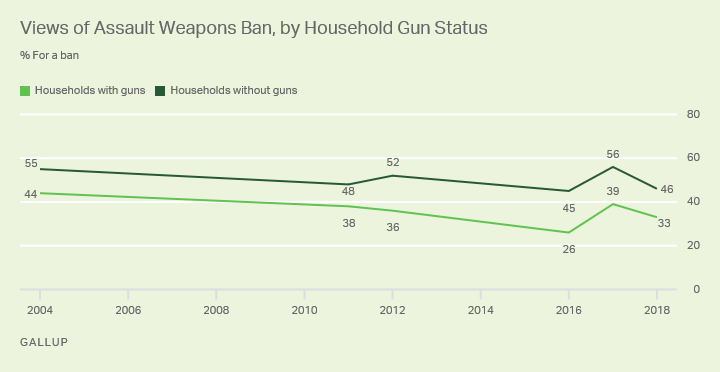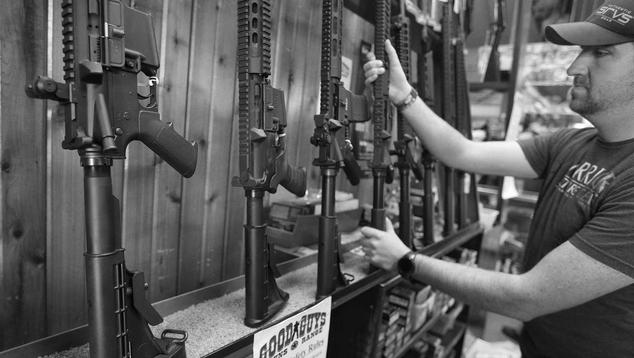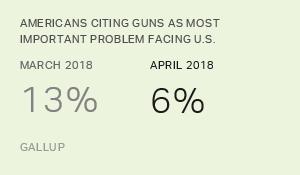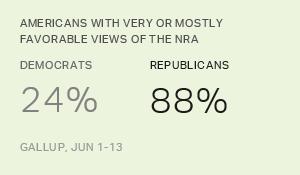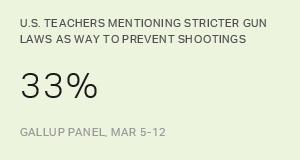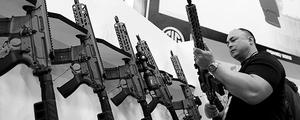Story Highlights
- 57% oppose banning semi-automatic guns; 40% favor a ban
- Opposition is up after 2017 reading in wake of Las Vegas shooting
- Democrats more than twice as likely as Republicans to favor ban, 56% to 25%
WASHINGTON, D.C. -- Americans' support for a ban on semi-automatic guns in the U.S. has dropped eight percentage points from a year ago, when opinions were more evenly divided after the mass shooting in Las Vegas. Last year's measure was unusually high for the trend over the past several years; the current 40% is back to within a few points of where it was between 2011 and 2016.
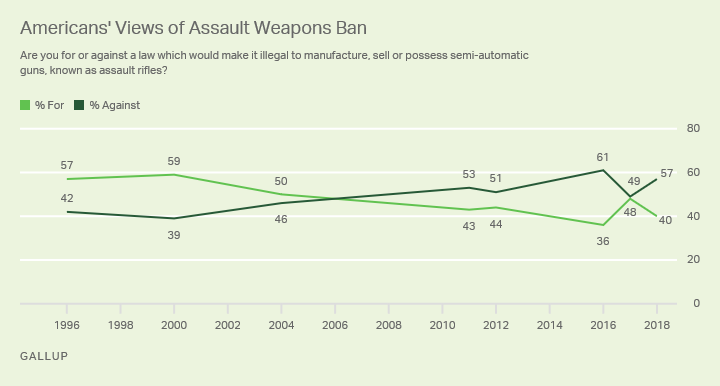
The latest findings, from an Oct. 1-10 survey, mark the eighth time since 1996 that Gallup has gauged public opinion on banning "semi-automatic guns, known as assault rifles." These types of guns, which reload automatically but fire only once per trigger pull, have been used in a number of mass shootings in the U.S. in recent years.
Background: Support for banning assault rifles has changed over time. In 1994, President Bill Clinton signed a ban on assault weapons in the U.S. When Gallup first asked Americans about such a ban in 1996, 57% were in favor and 42% opposed. By the time the 10-year ban expired in 2004, support had fallen to 50%. In recent years, opinion has generally been against such a law, and an attempt to pass a new ban -- after the Newtown, Connecticut, school shooting -- was defeated in 2013.
In 2016, 36% supported a ban and 61% opposed one. But last year, after the Las Vegas shooting left 58 people dead and nearly 500 injured, support for a ban rose 12 points.
The current 40% support for an assault rifles ban is below the historical average of 47%. The latest data provide further evidence that public opinion typically shifts to higher support for tougher gun laws in the aftermath of a traumatic national event such as a mass shooting, but gradually reverts to prior levels as the memory of it fades.
Views of an assault weapons ban are sharply polarized politically. Since 1996, Democrats have been more supportive than Republicans of a ban on semi-automatic guns. Currently, they are more than twice as likely as Republicans to favor such a ban (56% vs. 25%). Republicans' current reading ties with 2016 as their lowest. Thirty-eight percent of independents support a ban, continuing the recent trend in which they are more closely aligned with Republicans than with Democrats.
The highest support for a ban among each party was 50% of Republicans in 1996, 63% of Democrats in 1996, 2000 and 2017, and 63% of independents in 2000.

Americans without a gun in the home are more likely than those with a gun to favor banning assault rifles (46% vs. 33%, respectively). This 13-point difference is in line with the 14-point average difference, historically.
